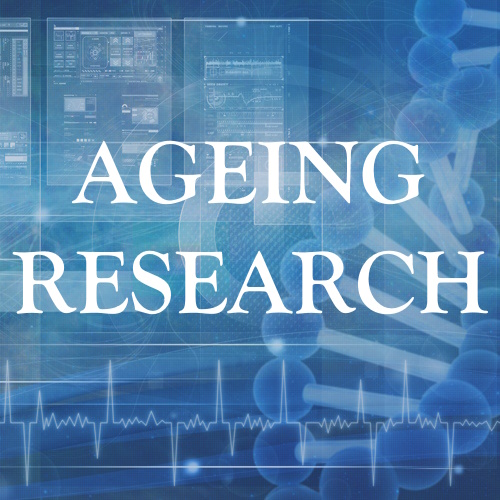In recent years, research on extending lifespan and promoting healthier ageing has grown tremendously. While this area once seemed futuristic, it’s now a field brimming with scientific promise, thanks to advances in genomics, biotechnology, and machine learning (ML).
Researchers aim to discover compounds that extend lifespan by targeting key biological processes involved in ageing. But as testing thousands of compounds in animals is costly and time-consuming, the search for potential longevity drugs has faced limitations.
Machine learning offers a powerful solution by allowing researchers to analyze vast datasets efficiently and identify promising compounds for longevity studies. In a new study, researchers used ML to predict which chemical compounds might extend the lifespan of mice, a common model organism for ageing research.
This study employed Random Forest classifiers, a popular ML model, to analyze data from the DrugAge database and identify compounds with strong lifespan-extending potential in mice. By doing so, researchers hope to speed up the search for future anti-ageing therapies that might also benefit humans.
Why Mice? The Role of Animal Models in Ageing Research
Mice are a cornerstone in the study of ageing and drug discovery. Their genomes share remarkable similarities with humans, especially regarding genes and pathways that influence ageing.
Furthermore, mice are easy to maintain, have short lifespans, and reproduce quickly, making them ideal for lifespan studies. Researchers can test different compounds on mice to observe the effects of each compound on their lifespan and overall health.
Using mice does come with challenges. Differences between males and females can lead to distinct responses to certain treatments, and not all findings in mice translate directly to humans. However, studies in mice are a critical preclinical step, helping us understand complex ageing mechanisms and paving the way for future human studies. In this study, scientists focused specifically on chemical compounds that might extend mouse lifespan, hoping these insights will later inform human longevity research.
How the Machine Learning Models Work
In this study, researchers applied machine learning to predict compounds that could prolong life. They used Random Forest classifiers, a type of machine learning model known for handling complex, multi-feature data. These models analyze patterns across numerous variables, helping to distinguish compounds with potential anti-ageing effects from those without.
The researchers used lifespan data from the DrugAge database, which compiles studies on various compounds tested for longevity effects in model organisms. The data included details on compounds’ protein targets, gene associations, and chemical structures.
Each compound had features, such as Gene Ontology descriptors, protein domains, and molecular pathways, that were used to predict whether it might extend lifespan. By feeding this information into the Random Forest models, researchers trained them to recognize patterns associated with lifespan-extending compounds.
Random Forest classifiers work by creating multiple decision trees, where each tree “votes” on whether a compound is likely to extend lifespan. The model then averages these votes to make a final prediction. The study’s classifiers analyzed patterns in compounds’ biological targets and interactions to predict longevity effects.
Training Models for Accuracy and Precision
Ensuring accurate predictions requires training machine learning models on high-quality, balanced datasets. In this study, the researchers created datasets based on sex, analyzing male-only, female-only, and mixed-sex data. Interestingly, models trained on male-only data performed the best, likely due to a larger sample of lifespan-extending compounds in male mice compared to females.
The researchers used multiple metrics to assess the models' accuracy, such as Area Under the Curve (AUC) and Geometric Mean (GMean). AUC measures how well the model distinguishes between compounds that could extend lifespan and those that cannot, while GMean offers a balanced accuracy measurement, accounting for both “true positives” and “false positives.”
By using these metrics, researchers ensured that their models could reliably predict lifespan-extending compounds, minimizing biases or overfitting.
Targeting Longevity Pathways
The study yielded promising results, identifying specific targets and compounds that may significantly impact lifespan. The top-performing models highlighted certain compounds associated with insulin and IGF1 receptors, dopamine and serotonin receptors, beta-adrenergic receptors, and specific ion channels. These receptors play key roles in regulating metabolism, stress response, and cellular processes critical for maintaining health.
Among the findings, features related to G-protein-coupled receptors emerged as strong indicators of lifespan extension potential. These receptors influence various physiological responses, including mood, immune function, and metabolism. Additionally, compounds targeting insulin and IGF1 pathways showed potential, which aligns with known longevity interventions, as these pathways are commonly linked to ageing and metabolism in mammals.
The machine learning models pointed out several chemical clusters likely to promote lifespan extension, opening new directions for future longevity research. By identifying these compounds and understanding their target interactions, researchers are a step closer to advancing anti-ageing therapies.
How These Compounds Work in Ageing Mechanisms
What makes these compounds so promising?
The compounds identified by the study primarily affect neurotransmitter and hormone receptors and ion channels, all crucial players in ageing mechanisms. G-protein-coupled receptors (GPCRs), for instance, act as molecular switches within cells, translating external signals into cellular responses. Compounds that influence GPCRs, such as those targeting dopamine and serotonin receptors, can alter mood, stress response, and even cellular ageing processes.
In particular, the insulin and IGF1 pathways have long been associated with longevity. By regulating blood sugar levels and cellular growth, these pathways play essential roles in energy metabolism and cell repair, both of which are closely linked to ageing. Studies show that regulating insulin and IGF1 signaling can promote lifespan extension, as seen in caloric restriction models.
Additionally, dopamine and serotonin receptors regulate behavior, mood, and neurological processes. Research has shown that these neurotransmitters, which impact sleep, stress, and reward pathways, also influence ageing. Manipulating these pathways through compounds might help delay age-related decline, offering potential therapeutic approaches to maintain neurological health during ageing.
Limitations and Next Steps
While the findings are promising, using machine learning in drug discovery has its challenges. One major limitation is the small number of lifespan-extension experiments in mice, especially with female-only datasets. Due to this data imbalance, models trained on male-only data showed better accuracy, leaving room to expand research on female-specific data in future studies.
Another challenge lies in the general limitations of machine learning models. The models can identify patterns but don’t yet provide a complete understanding of how each compound works in a biological system. While some compounds identified in this study may show promise for lifespan extension, further animal and human testing is essential to validate these predictions.
Moreover, the model doesn’t account for different dosages or treatment methods, which can influence the effects of a compound. A compound that extends lifespan at a low dose may have the opposite effect at a higher dose. Researchers plan to refine these models and incorporate more diverse datasets to improve prediction accuracy and explore the full potential of ML in longevity studies.
Conclusion
This study represents a significant step forward in longevity research, showcasing the power of machine learning to screen thousands of compounds and identify those with the potential to extend lifespan. By focusing on pathways linked to ageing, such as insulin signaling, neurotransmitter regulation, and metabolic pathways, researchers have identified a shortlist of promising compounds for future studies.
As machine learning continues to evolve, we can expect even more refined models that can handle larger, more complex datasets. Eventually, these tools could enable researchers to test compounds virtually, saving time and resources, and accelerating the discovery of anti-ageing treatments. While this study focused on mice, the insights gained may ultimately inform drug development efforts for human ageing and age-related diseases.
The future of ageing research lies in the convergence of biology and technology. With machine learning’s potential to reveal new patterns in ageing mechanisms, scientists are hopeful that breakthroughs in longevity science are just around the corner.
The study is published in the journal BioRxiv and carried out by João Pedro de Magalhães by from University of Birmingham.








